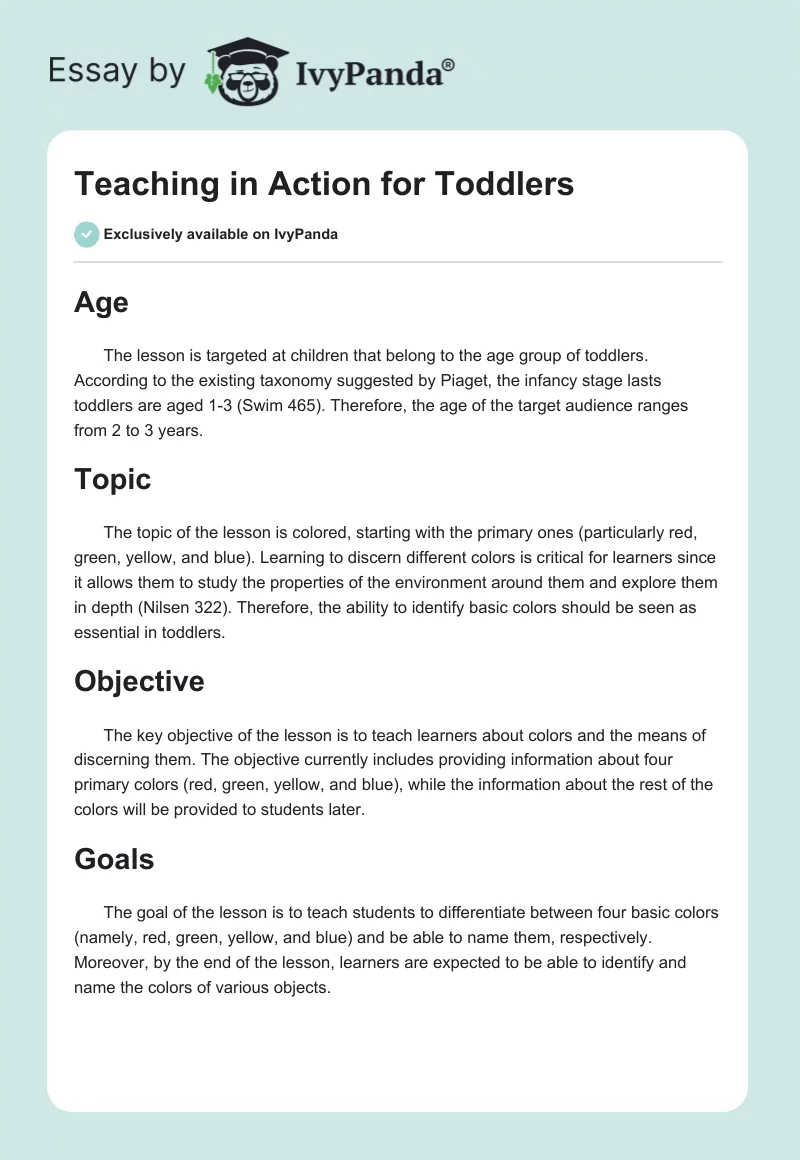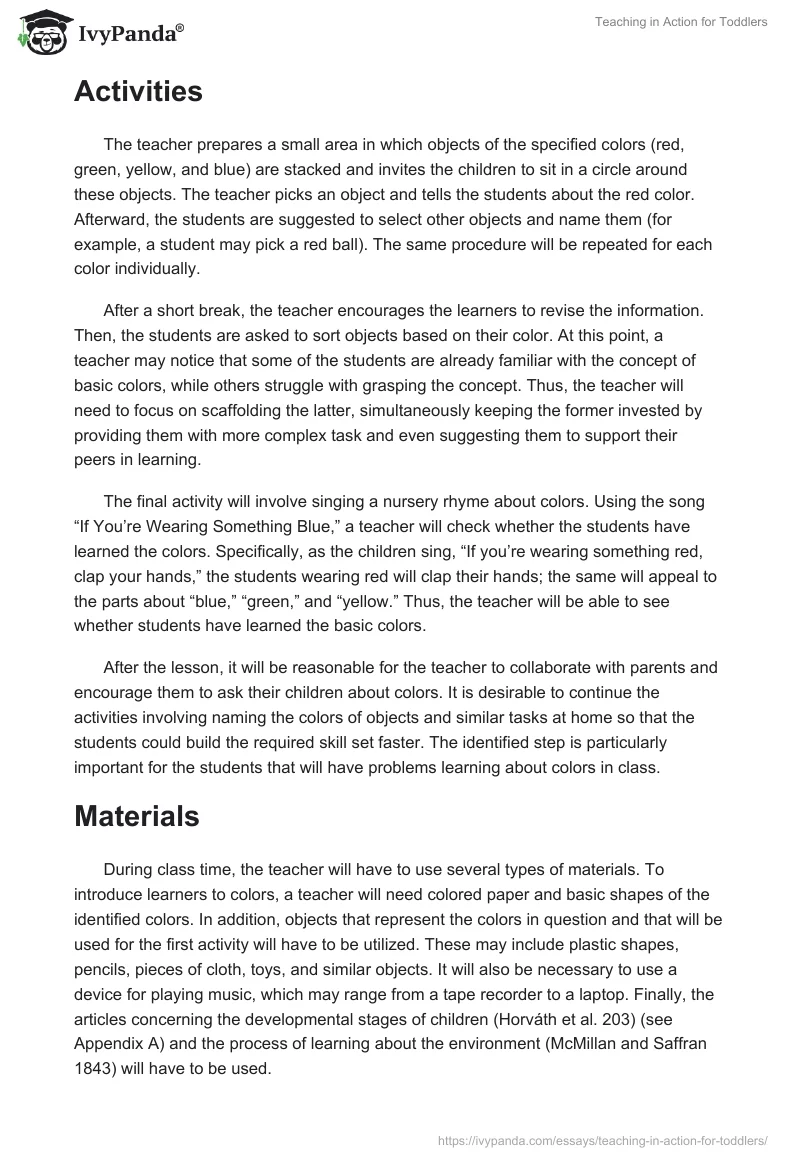Age
The lesson is targeted at children that belong to the age group of toddlers. According to the existing taxonomy suggested by Piaget, the infancy stage lasts toddlers are aged 1-3 (Swim 465). Therefore, the age of the target audience ranges from 2 to 3 years.
Topic
The topic of the lesson is colored, starting with the primary ones (particularly red, green, yellow, and blue). Learning to discern different colors is critical for learners since it allows them to study the properties of the environment around them and explore them in depth (Nilsen 322). Therefore, the ability to identify basic colors should be seen as essential in toddlers.
Objective
The key objective of the lesson is to teach learners about colors and the means of discerning them. The objective currently includes providing information about four primary colors (red, green, yellow, and blue), while the information about the rest of the colors will be provided to students later.
Goals
The goal of the lesson is to teach students to differentiate between four basic colors (namely, red, green, yellow, and blue) and be able to name them, respectively. Moreover, by the end of the lesson, learners are expected to be able to identify and name the colors of various objects.
Activities
The teacher prepares a small area in which objects of the specified colors (red, green, yellow, and blue) are stacked and invites the children to sit in a circle around these objects. The teacher picks an object and tells the students about the red color. Afterward, the students are suggested to select other objects and name them (for example, a student may pick a red ball). The same procedure will be repeated for each color individually.
After a short break, the teacher encourages the learners to revise the information. Then, the students are asked to sort objects based on their color. At this point, a teacher may notice that some of the students are already familiar with the concept of basic colors, while others struggle with grasping the concept. Thus, the teacher will need to focus on scaffolding the latter, simultaneously keeping the former invested by providing them with more complex task and even suggesting them to support their peers in learning.
The final activity will involve singing a nursery rhyme about colors. Using the song “If You’re Wearing Something Blue,” a teacher will check whether the students have learned the colors. Specifically, as the children sing, “If you’re wearing something red, clap your hands,” the students wearing red will clap their hands; the same will appeal to the parts about “blue,” “green,” and “yellow.” Thus, the teacher will be able to see whether students have learned the basic colors.
After the lesson, it will be reasonable for the teacher to collaborate with parents and encourage them to ask their children about colors. It is desirable to continue the activities involving naming the colors of objects and similar tasks at home so that the students could build the required skill set faster. The identified step is particularly important for the students that will have problems learning about colors in class.
Materials
During class time, the teacher will have to use several types of materials. To introduce learners to colors, a teacher will need colored paper and basic shapes of the identified colors. In addition, objects that represent the colors in question and that will be used for the first activity will have to be utilized. These may include plastic shapes, pencils, pieces of cloth, toys, and similar objects. It will also be necessary to use a device for playing music, which may range from a tape recorder to a laptop. Finally, the articles concerning the developmental stages of children (Horváth et al. 203) and the process of learning about the environment (McMillan and Saffran 1843) will have to be used.
Works Cited
Horváth, Klára, et al. “Daytime Nap Facilitates Generalization of Word Meanings in Young Toddlers.” Sleep, vol. 39, no.1, 2016, pp. 203-207.
McMillan, Brianna TM, and Jenny R. Saffran. “Learning in Complex Environments: The Effects of Background Speech on Early Word Learning.” Child Development, vol. 87, no. 6, 2016, pp. 1841-1855.
Nilsen, Barbara. Week by Week: Plans for Documenting Children’s Development. 7th ed., Cengage Learning, 2016.
Swim, Terri Jo. Infants, Toddlers, and Caregivers: Caregiving and Responsive Curriculum Development. 7th ed., Cengage Learning, 2016.


